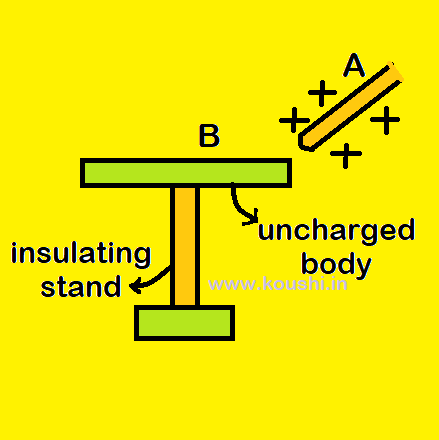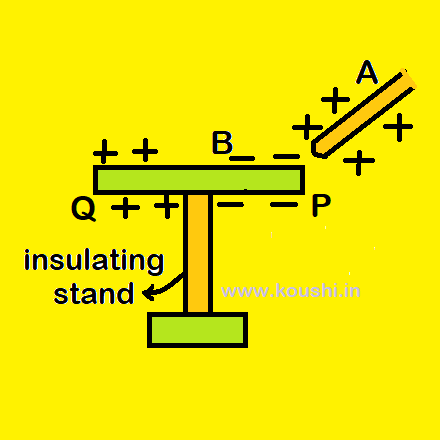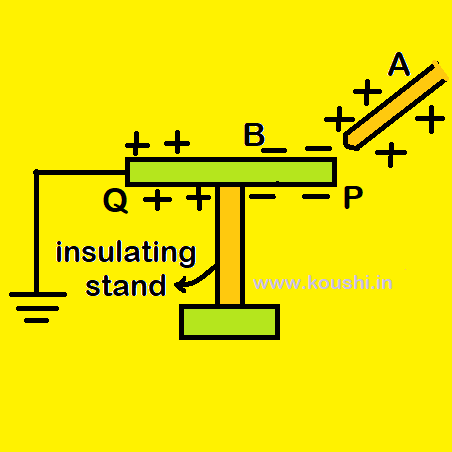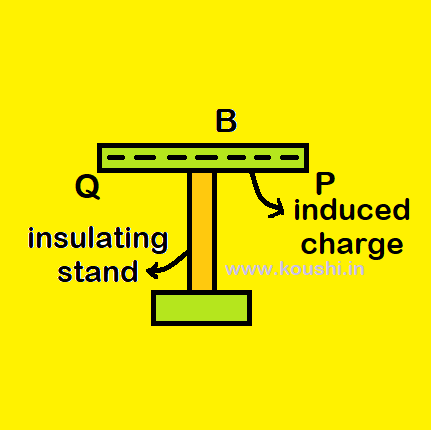

Electric charges and field Part – 1
tag:
Share:
Admin Koushi


Charging by friction:
When two objects are rubbed together, one object loses electrons while the other gains electrons. So electron is transferred from one object to the other. The object that gains electrons becomes negatively charged, while the object that loses electrons has an excess of positive charge. There is a series called triboelectric series. If two of the materials are brought in contact according to this series electrons are transferred from the material higher in the table to the one further down in the table.
1. Asbestos 2. Glass 3. Nylon 4. Wool 5. Lead 6. Silk 7. Aluminium 8. Paper 9. Cotton 10. Steel 11. Hard rubbe 12. Nickel and copper 13. Brass and silver 14. Synthetic rubber 15. Iron 16. Saran 17. Polyethylene 18. Teflon 19. Silicono
Charging by induction:
Charging by induction is the process of charging an uncharged body without bringing a charged body in actual contact with it. When a positively charged body (say A) is brought close to an uncharged body (say B), it attracts opposite charges and repels similar charges present in the uncharged body. So the end (P) of the body B near to A becomes negatively charged and the other end (Q) becomes positively charged. The charges at the end P are known as bound charges, as they are bound by the attraction of the charge of A. The charges at the end Q are known as free charges, as they are free to move farther away from A. If the body B is earthed, keeping A in place, electrons from the ground enter the end Q. If there are electrons at the end Q, electrons enters the ground. If A is now moved away, then the electrons at the end P spread throughout its surface and B becomes negatively charged which is known as the induced charge.




The nature of the induced charge is always opposite to the nature of the inducing charge.
The maximum value of induced charge is given by q/ = – q[1 – ![]() ].
].
Where q is the inducing charge and k is the dielectric constant of the material of uncharged body.
In the case of metals, k = ![]() so, q/ = – q. So, the induced charge in a metallic conductor is always equal in magnitude, but opposite in sign to that of the inducing charge.
so, q/ = – q. So, the induced charge in a metallic conductor is always equal in magnitude, but opposite in sign to that of the inducing charge.
Gold-leaf electroscope: It is used to detect the presence and nature of electric charge on a body. It consists of a brass disc connected with a brass rod, called stem. Two gold leaves are connected at lower end with the stem. The brass rod passes through an insulator plug fitted into the mouth of a glass bottle. A metal foil is placed on the wall of the bottle which is earthed.
The body to be tested is brought into contact with the disc of the uncharged electroscope. If the body is charged, charge is transferred from it to the gold leaves through the stem and leaves diverge due to repulsion.

To find the nature of charge on the body, the leaves of the electroscope are first charged positively or negatively. Now the body is brought into contact with the disc, and if the gold leaves diverge, then the charge on the body is of same kind as the charge on the electroscope. If leaves converge then the charge on the body is opposite kind as the charge of the electroscope.
Click the button to go to the next part of this chapter.
© 2018 – 2025 Koushi All Rights Reserved